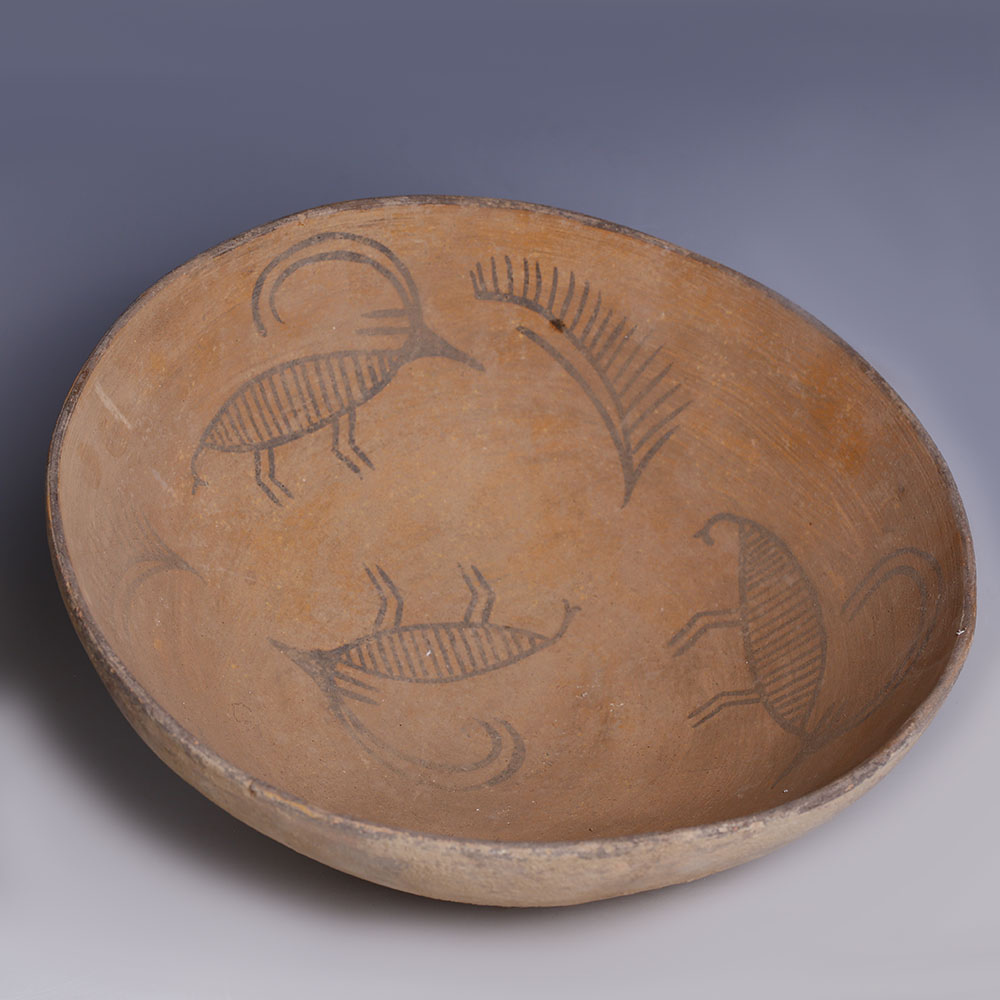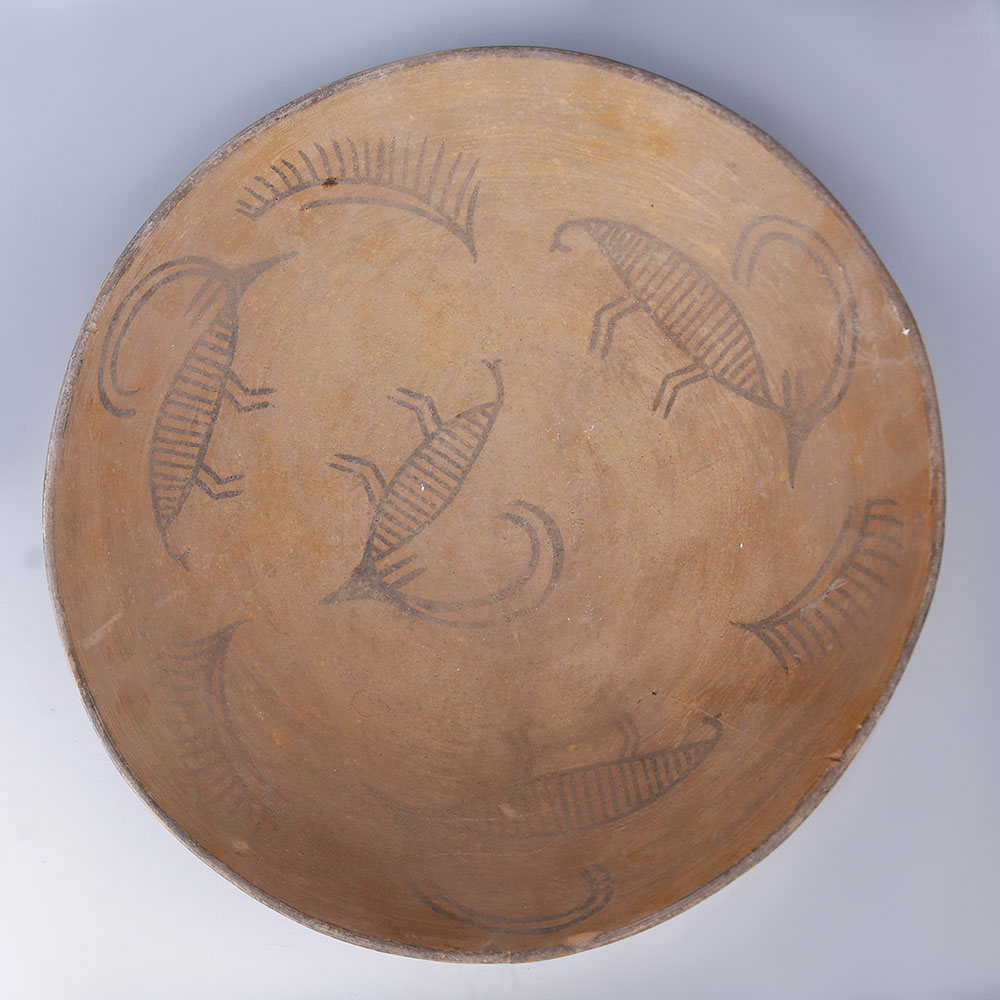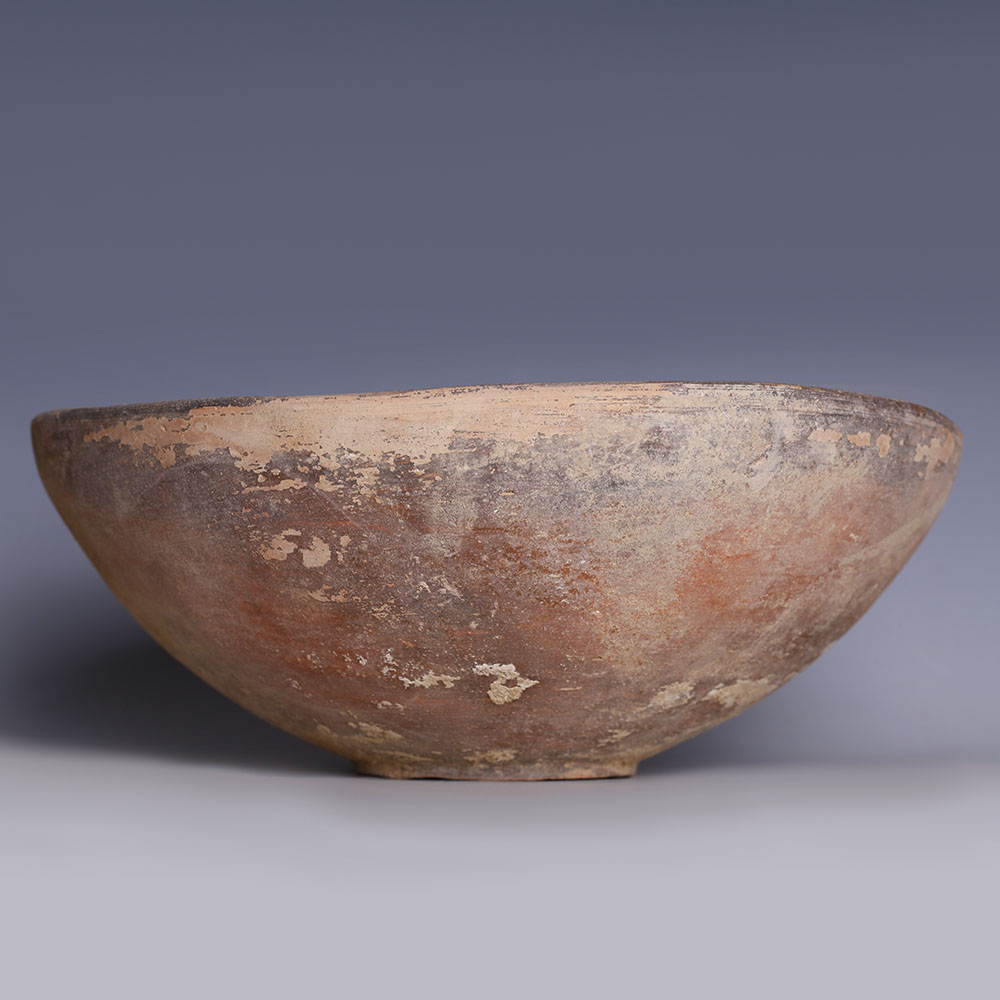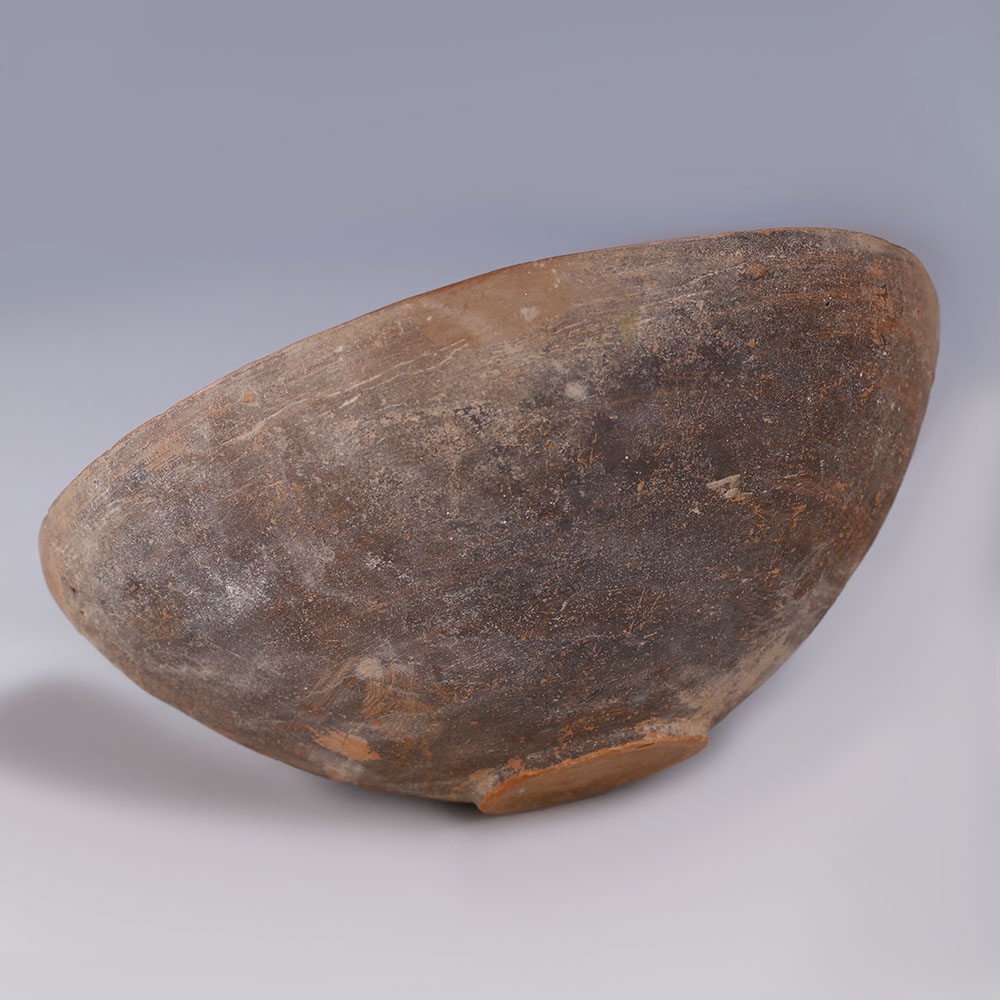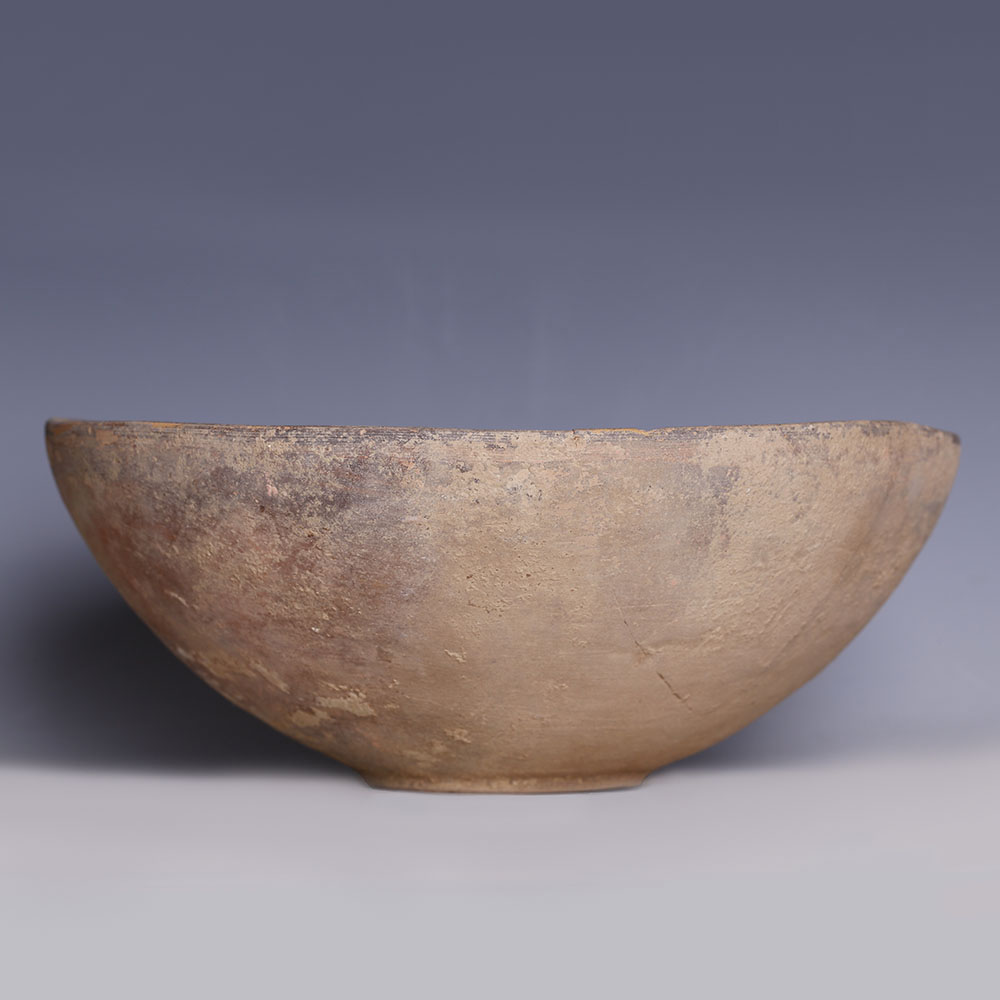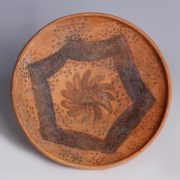The Indus Valley is a Bronze Age civilization from the Near East, which lasted from 3300 BC to 31 BC. It was discovered when engraved seals were found in the Pakistan’s province of Punjab in 1920-21, first in a site called Harappa and then all along the Indus River. Indus Valley inhabitants are known to be skilled in a wide range of techniques, but it is thanks to pottery production that they have been appreciated by archaeologists and collectors. Most of the pottery from such civilization can be dated back to the Nal culture, which flourished in the northwest region of the Indus Valley. Their terracotta works are characterized by a linear style and geometric repetition of shapes and lines. Also, animals and plants, rendered in a stylised manner, abounded on their creations. Pigments would have been added to enrich such vessels, which would have been used in everyday life but also placed in the tombs with the deceased as grave goods.
Indus Valley Terracotta Bowl with Ibexes
$186.59
A finely decorated large Indus Valley terracotta bowl sat on a ring foot painted with stylized ibexes and floral motifs. To the inner of the bowl is a central ibex surrounded by three ibexes alternating with three vegetal-floral motifs painted in a dark brown pigment. A dark band features along the rim, the outside of the bowl is undecorated. The ibex is one of the most popular zoomorphic motifs present in the Indus Valley production.
Condition: Extremely well-preserved item, fully intact and with original pigmentation.
SOLD
| Weight | 1000 g |
|---|---|
| Dimensions | W 25.5 x H 8.5 cm |
| Culture | |
| Pottery and Porcelain | |
| Region |
